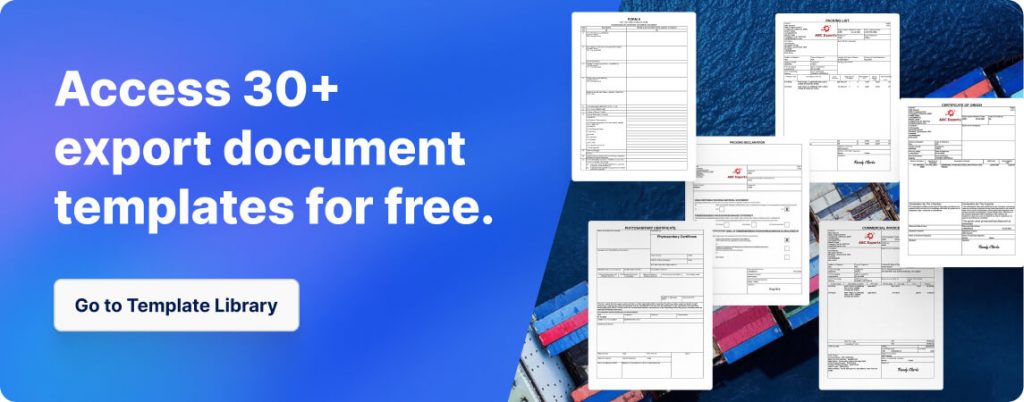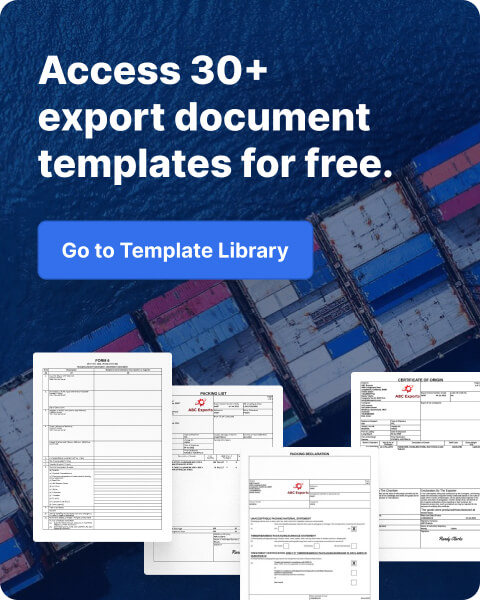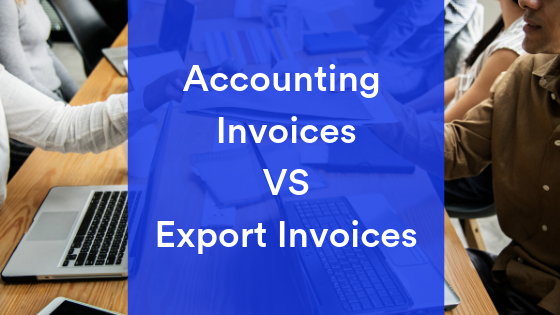Invoices are needed in every trade transaction. In global trade, they help clear customs and avoid payment problems. Domestic accounting invoices are simpler and used to record local sales. Export invoices contain extra details that customs and banks need to see.
What Is an Accounting Invoice?
An accounting invoice is a document that shows the details of a sale within a country. It includes the names of the buyer and seller, a short description of the goods or services, and the total amount to be paid. It also shows any taxes or discounts. These invoices help companies keep their financial records up to date and follow local tax rules.
These invoices are made for local sales. They are simpler because they do not need extra details that customs or banks might ask for in international trade. They help the seller track what is owed and make sure they get paid. They also make it easier for businesses to calculate taxes, report to the government, and keep their accounts balanced.
Unlike export invoices, these documents do not cover things like shipping routes, Incoterms, or product classification codes. They focus only on the sale of goods or services within the same country and are not used to handle customs or trade compliance for overseas shipments.
What Is an Export Invoice?
An export invoice is used when goods or services are sold to a buyer in another country. It is more detailed than an accounting invoice and includes all the basic information about the sale plus extra fields that customs and banks need for international trade.
This type of invoice covers the details of the buyer and seller, product classification codes, country of origin, and shipping information. It also includes Incoterms to show who is responsible for the costs and risks at each step of shipping. The true commercial value of the goods is stated, even for free samples or replacements.
Export invoices come in different forms. Proforma invoices are shared before the shipment to show estimated costs and terms. Commercial invoices are used to complete the transaction and meet customs rules. These documents are needed to calculate duties and taxes, process payments, and help goods move smoothly across borders. That’s why export invoices are critical for global trade.
Key Differences Between Accounting and Export Invoices
| Feature | Accounting Invoice | Export Invoice |
|---|---|---|
| Use Case | Local sales and payments | Global trade and customs clearance |
| Fields Included | Buyer and seller info, product/service description, total amount, local taxes | All accounting invoice fields plus product classification codes, country of origin, Incoterms, shipping details, commercial value, and certifications |
| Compliance | Domestic tax and business rules | International trade rules and customs regulations |
| Currency | Local currency only | Buyer’s currency or foreign currency often used |
| Payment Tracking | Local payments | Cross-border payments and trade finance |
| Certifications and Notes | Usually not included | May include destination control statements, export licenses, and extra certifications |
| Customs Use | Not used by customs | Required by customs to clear goods at borders |
Example of Commercial Invoice vs. Accounting Invoice

What Additional Details Must Export Invoices Include?
Export invoices go beyond what is found in a local accounting invoice. They include extra details needed for customs clearance and global payment security. Here’s what they must have:
- HS Codes or HTS Codes / Product classification
These codes identify the goods for customs. They help customs departments check duties, taxes, and ensure the goods are allowed. - Country of origin
This field shows where the goods were made or last changed. Customs need this to see if the goods meet any trade rules or special duties. - Incoterms
Incoterms explain who pays for each part of the shipping process. They help buyers and sellers understand their responsibilities. - True commercial value
The real value of the goods must be listed, even if the goods are free samples. Customs use this to calculate taxes and fees. - Destination control statement
This legal note tells customs where the goods can go. It helps follow export control rules for certain goods. - Export license info (if needed)
Some goods need special approval to leave the country. Listing this helps customs clear them without delays. - Bank account info (SWIFT, IBAN)
Export invoices show international bank details. This ensures the buyer can pay the right account without confusion. - Shipping ports and destinations
These fields help customs see how the goods move across borders. It’s also needed if goods pass through multiple countries. - Certifications required by the buyer’s country
Some countries need extra paperwork to clear goods. Adding these certifications prevents delays. - United Nations Layout Key format
This format makes sure invoices follow global standards. It reduces errors or confusion during customs checks.
Why Export Invoices Need to Be Accurate
Export invoices need to be correct and complete. Missing or wrong details can cause real problems for the shipment and for the seller.
Incomplete export invoices can lead to delays at customs. Customs officials may hold the shipment until they get the right paperwork. This can mean long wait times at ports and added storage costs. In some cases, goods can even be sent back to the seller.
Mistakes on an export invoice can lead to potential fines. Customs authorities in some countries have strict rules. They can charge penalties for wrong information or missing fields. For example, in the United States, exporters can face fines under the Export Administration Regulations (EAR) if export invoices are not accurate for controlled goods. In the European Union, fines can be charged for misdeclaring the value or origin of goods. In Australia, customs may issue infringement notices for missing information, which can lead to thousands of dollars in fines.
Payment disputes can also happen if the export invoice does not have the right bank details or payment terms. Banks use export invoices to process letters of credit or other trade finance deals. Errors can delay or stop payments altogether. In some cases, the buyer might refuse to pay if the invoice does not match what was agreed.
Accurate export invoices also help meet legal trade rules. These rules protect the seller from claims of misdeclaration or fraud. They also protect the buyer and ensure goods flow smoothly across borders.
That is why export invoices must be filled out carefully and checked for accuracy every time.
How to Create Compliant Export Invoices
Avoid common mistakes by using a tool like our Trade Documentation Tool at IncoDocs. It helps you create export invoices that meet compliance with international trade.
Ready-made templates show you how to fill in the right fields so your invoices meet the standards of global trade.
Common Questions About Accounting Invoice vs Export Invoice
Can an accounting invoice be used as an export invoice?
No, an accounting invoice does not have the extra details that customs and banks need in international trade. Using only an accounting invoice can delay shipments and payments because it does not meet trade compliance standards.
Do export invoices always need to match the accounting invoice?
Not always. The basic sale details must match, like the buyer, seller, and amount due. But export invoices have extra fields for trade compliance that the accounting invoice does not need. These extra fields help customs and banks handle the shipment and payments.
Why does customs care about the export invoice value even for free samples?
They use the true commercial value to calculate taxes. Even if goods are free, customs still needs to know their real worth. This helps them apply the right duties and check for trade restrictions. It also stops sellers from under-declaring values to avoid taxes.
Can export invoices be in the buyer’s currency, even if accounting is local?
Yes, export invoices often show the currency agreed to in the trade deal, which is usually the buyer’s currency. This helps with payments across countries. Your local accounting invoice can still be in your country’s currency for tax and record-keeping.


Read how buyers and sellers digitally countersign proforma invoices, purchase orders and sales contracts online using digital company stamps.
Read how to create Proforma Invoice and Purchase Order documents here.
Read the difference between a Proforma Invoice and Commercial Invoice here.








